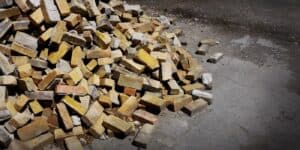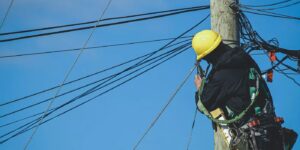
Oftentimes at buildings and jobsites and worksites there are objects that fall and strike workers. Unless you’re wearing a helmet, it is very easy to be hit with a falling object. If an object falls and hits a worker, the injuries can be severe, even deadly. Per OSHA, there were more than 52,600 incidents of workers being struck by objects falling at the jobsite.
Part of the problem occurs when a worker’s tools are not properly secured or tied up and they fall from a worker’s tool-belt if the worker is working at a great height.
FALLING OBJECTS, WALLS, AND MATERIALS STATE LAWS
When workers are injured, a lot of the time it’s because the employer has not thought up a fall protection program for tools and equipment that can fall onto a worker below. OSHA recommends that workers can use tools without interference, tools that weigh more than five pounds should be fastened to a structure or a tether to keep the tool secure, and monitor the load rating.
For a free legal consultation with a Personal Injury Lawyer
Following these simple steps can save a worker’s life because the third largest reason for death on the jobsite is because of objects and equipment. OSHA also requires workers to make sure tools and materials are prevented from falling, using toe boards and screens on guard rails and use debris nets or catch platforms to secure falling objects. There is no duty or law on the books that says that tools must be tied up or tethered to a worker or station.
OSHA is the governing body that can cite employers from tools or materials that fall and harm a worker. OSHA will point to the General Duty clause when citing an employer. In order to be cited, there must be a hazard present, the hazard has to be recognized that can cause injury or death to a worker, and the hazard has to be able to be corrected.
Personal Injury Lawyer Near Me
OSHA also recommends the following measures to keep workers safe. If a worker wants to hand a tool to another worker, the worker should make sure the tool is tethered and secured. Employees should be trained on how to handle tools that tethered and how to connect tools, as well as how to hoist tools. A worker’s height should only bring up the tools necessary to do the job. There are many bags and pouches available for sale that can decrease the risk that an item will fall. Toe boards can also help stop falling tools, especially if the toe-board can withstand 50 pounds of pressure. Finally, there are also debris nets that can catch falling tools.
Click to contact our Personal Injury today
Erecting walls at a jobsite can also pose a real hazard to a worker. OSHA has a recommended fall protection regimen where an anchorage is tied up to the worker, the worker wears a harness, and a lanyard acts as a connector that bridges the harness to the anchorage. If a worker is hooked up like this, it is very unlikely the worker will fall.
We Are committed to winning and winning big for our clients




